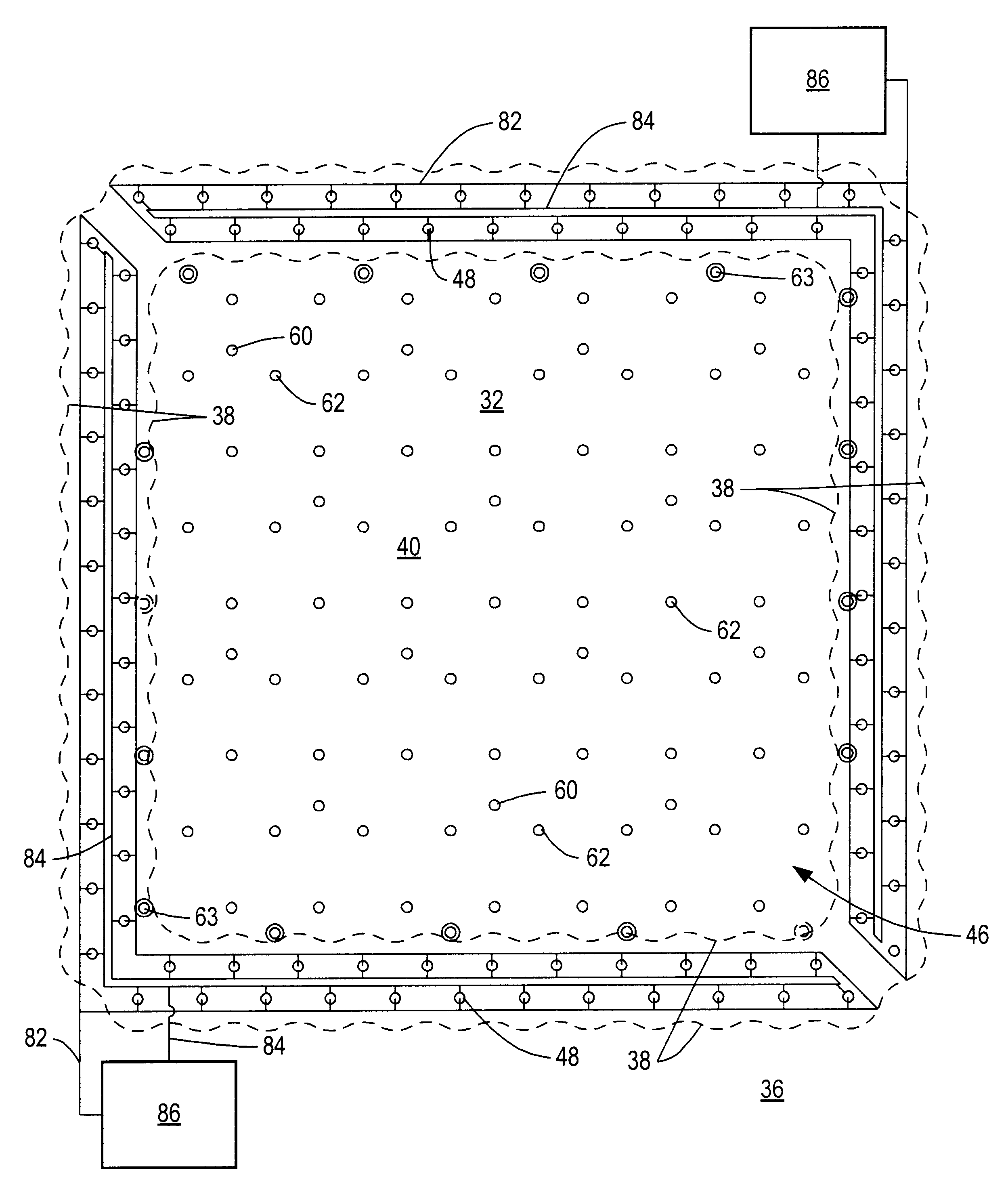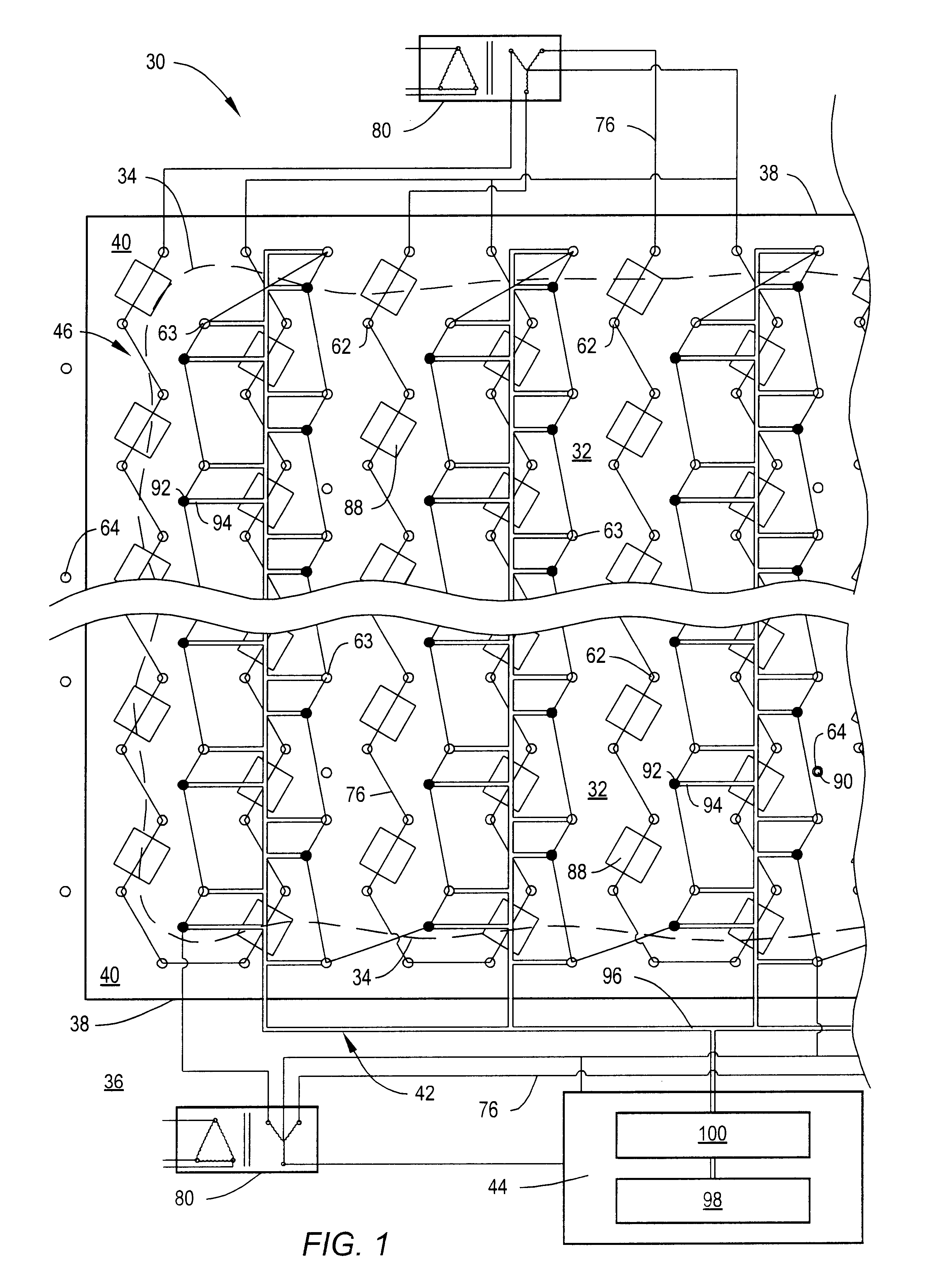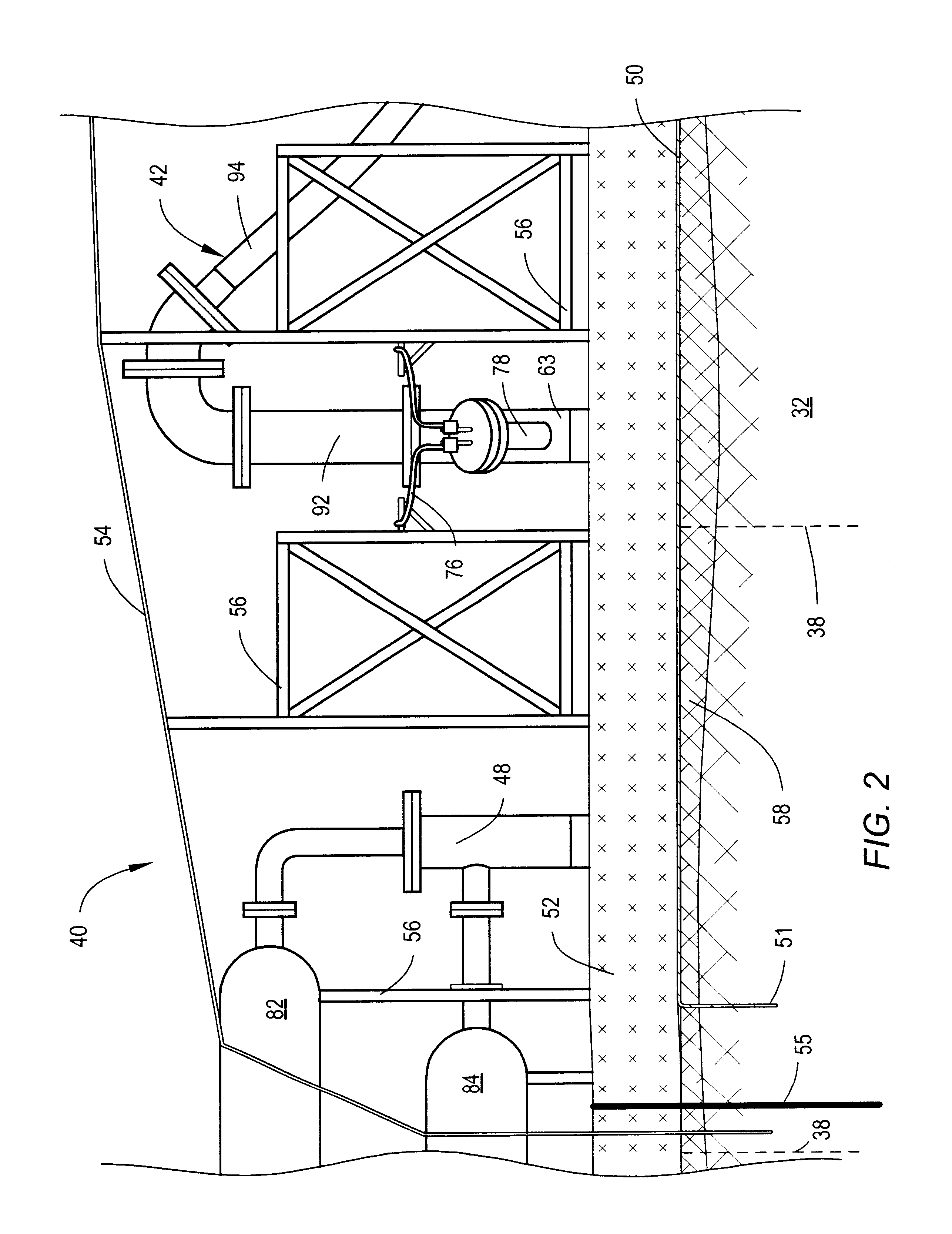[0025]Location, extent, and concentration of
mercury contamination may be determined prior to installing a soil remediation system that will remove or reduce to acceptable levels contaminants within the soil. Non-intrusive tests may be used to establish the location of mercury within the soil. The use of
radar, gravimetric surveys, and / or electromagnetic surveys may determine the presence of mercury within the soil. The metallic characteristics of mercury may make large quantities of mercury within the soil detectable using
radar. The presence of water within the soil may limit the effectiveness of radar as a mercury locating test. The presence of mercury within soil may increase the average density of the soil. A measurable increase in gravity may be indicated above soil that is contaminated with mercury. A gravity survey may be used to detect density anomalies in the soil. A detected anomaly may indicate the presence of mercury, or the detected anomaly may indicate the presence of some other type of density anomaly in the soil. In addition to increasing the average density of the soil, mercury may decrease the electrical resistance of the soil and cause
induced polarization.
Radar indications, density anomalies, decrease in
soil resistance, and / or the presence of
induced polarization may indicate the presence of mercury
contamination within an area of soil.
[0027]A soil remediation system used to treat mercury contaminated soil may be an ISTD soil remediation system. Heat may be applied to the soil by thermal blankets and / or heater wells. The type of soil heater may be determined based on the depth of the contaminants within the soil. Heater blankets may be used when
contamination is close to the ground surface. Heater wells may be used when the contamination is deeper in the soil. The heat applied to the soil may raise the
soil temperature above the
boiling point of mercury throughout a treatment area. A ring or rings of heater-extraction wells may surround other remediation wells in a treatment area. The heater-extraction wells may inhibit migration of contamination from the treatment area during soil remediation.
[0028]Containment of mercury within the treatment area and reduction of
airflow throughout the treatment area may be enhanced by a ground cover and by a barrier around a periphery of the treatment area. The barrier may inhibit migration of
soil contamination into adjacent areas. The barrier may also inhibit fluid flow into the treatment area from adjacent areas. The barrier may be formed of sections of steel plate or other type of material that are driven into the soil around the periphery of the treatment area. Grouting, high temperature rubber seals, or other types of seals may be used to couple individual sections together. Alternatively, the barrier may be a frozen barrier formed by freeze wells placed around the periphery of the treatment area.
[0029]A ground cover for a soil remediation system may inhibit release of vapor into the air from a treatment area. The ground cover may also inhibit fluid from being drawn into the soil from the ground surface. In an embodiment, the ground cover may include a first steel sheet placed on the surface of the ground, a layer of insulation on top of the first steel sheet, and a
vapor barrier over the insulation. Portions of wells extending into the soil may pass through the first steel sheet. The wells may be welded or otherwise sealed to the barrier. The
vapor barrier may inhibit release of material that escapes past the first steel sheet and may also inhibit air and / or water from being drawn into the soil from the surface. The
vapor barrier may be a steel barrier and / or a
polymer barrier. The
polymer barrier may be, but is not limited to,
polyethylene,
polypropylene,
silicone rubber, or combinations thereof. The vapor barrier may be sloped to direct runoff rainwater to a desired location. Condensate formed on an interior side of the vapor barrier may be gathered and introduced into a
treatment system of the soil remediation system to ensure that any contaminants within the condensate are properly treated. A support structure may be placed on top of the first steel sheet. The support structure may support wells, risers, wiring, collection
piping and other structures that pass into or out of the ground within the treatment area.
[0030]A soil remediation system may include a perimeter barrier that surrounds or partially surrounds a treatment area. The perimeter barrier may be a freeze wall, a
grout wall, and / or a number of sheets inserted into the ground to a desired depth and sealed together. A seal may be formed between a portion of a ground cover and the perimeter barrier. The seal may be, but is not limited to, a weld;
adhesive; and / or gaskets and clamping force provided by clamps, screws, bolts, or other types of fasteners. The perimeter barrier may inhibit migration of contaminants out of the treatment area. The perimeter barrier may also inhibit entry of fluid into the treatment area from areas adjacent to the treatment area.
 Login to View More
Login to View More  Login to View More
Login to View More 


